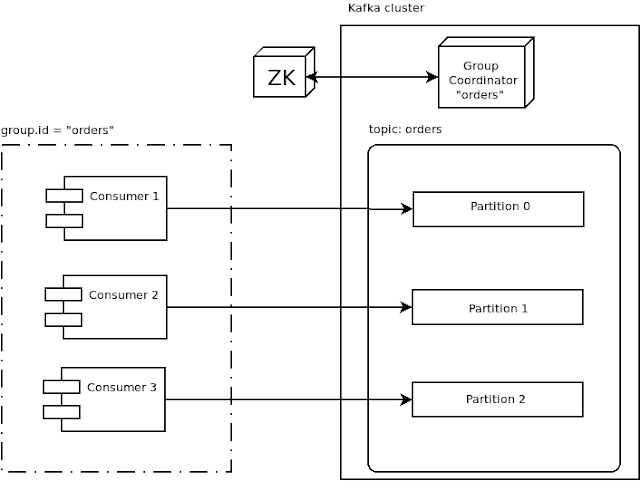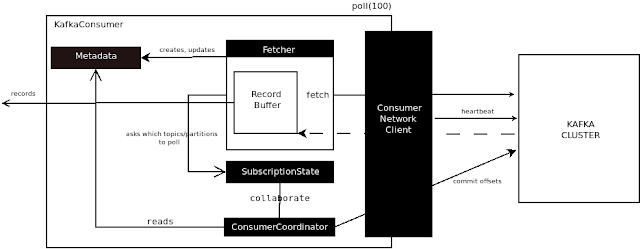Apache Kafka - V - Consumer Groups

Spanish version / Versión en Español A single consumer, having to receive and process messages in a single thread, can soon become a bottleneck, especially as producers, topics and partitions grow in number. Kafka overcomes this limitation by allowing consumers to share their load as evenly as possible by setting the group.id option on creation, and thus belonging to a consumer group. When a bunch of consumers set the same group id, a broker inside the cluster is automatically assigned as the group coordinator: his goal will be to monitor the consumers and keep track of their membership. The group coordinator also communicates with Zookeeper and the cluster controller/leader node in order to assign partitions to each consumer in the group. The ideal situation is to have consumer and partitions evenly matched, i.e. each consumer will read only one partition from the topic. Each consumer regularly sends a heartbeat to the cluster (with a frequency defined by t
